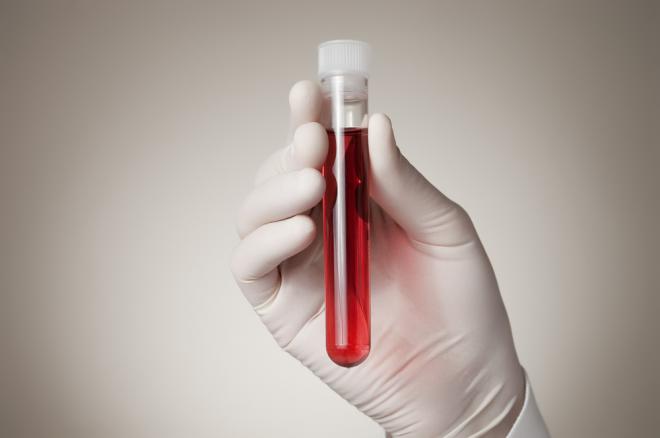Abstract
We recently reported that multiple sclerosis (MS) plasma contains IgG aggregates and induces complement-dependent neuronal cytotoxicity (Zhou et al., 2023). Using ELISA, we report herein that plasma IgG levels in the aggregates can be used as biomarkers for MS. We enriched the IgG aggregates from samples of two cohorts (190 MS and 160 controls) by collecting flow-through after plasma binding to Protein A followed by detection of IgG subclass. We show that there are significantly higher levels of IgG1, IgG3, and total IgG antibodies in MS IgG aggregates, with an AUC >90%; higher levels of IgG1 distinguish secondary progressive MS from relapsing-remitting MS (AUC = 91%). Significantly, we provided the biological rationale for MS plasma IgG biomarkers by demonstrating the strong correlation between IgG antibodies and IgG aggregate-induced neuronal cytotoxicity. These non-invasive, simple IgG-based blood ELISA assays can be adapted into clinical practice for diagnosing MS and SPMS and monitoring treatment responses.
Introduction
The oligoclonal bands (OCB) that contain immunoglobulin IgG1 and IgG3 are the most characteristic features of multiple sclerosis (MS) [[1], [2], [3]]. Intrathecal IgG synthesis and OCBs are associated with greater cortical lesion load/brain atrophy [2,4] and increased disease activity and disability [[5], [6], [7], [8]]. OCB status remains the most reliable parameter to confirm the likely diagnosis of MS [9].
Evidence suggests that IgG antibodies in peripheral blood may play important roles in MS pathogenesis. B cells participating in OCB production have been found in the peripheral blood [10]. The number of B cells is equivalent on both sides of the blood-brain barrier in MS [11,12], suggesting that B cell subsets from the blood may contribute to secreting the IgG antibodies found in MS cerebral spinal fluid (CSF) and that IgG antibodies in the plasma may be candidate biomarkers for the disease. However, contradicting results regarding MS plasma IgG antibodies have been reported. Two studies from the 1970s showed no difference in serum total IgG between MS and controls [13,14]. Other groups demonstrated no differences in IgG subclasses between MS and controls [[15], [16], [17], [18], [19]]. However, a high prevalence rate of lower serum IgG concentrations was recently found in MS patients [20].
We previously reported a complex relationship between IgG antibodies and oligoclonal bands and a strong correlation between serum and CSF IgG [21]. We further reported that peptide antigens in MS are patient-specific specific, and no common antigens were found [22]. Using direct ELISA, we recently published that higher levels of IgG3 antibodies and sialylated/galactosylated IgG antibodies are detected in MS sera [23,24]. These data indicate the complex nature of MS IgG antibodies, and their significance in MS still needs further investigation.
We recently discovered that MS plasma IgG antibodies form large aggregates (>100 nm), which are retained in the flow-through after passage over Protein A resin (A-FT), inducing complement-dependent neuronal apoptosis. We showed that IgG1 and IgG3 subclasses levels in MS A-FT were elevated, but there were no changes in IgG2 and IgG4 [25]. In the current study, we aim to develop blood IgG biomarkers focusing on evaluating the levels of IgG1 and IgG3 as candidates for diagnostic biomarkers for MS. We show that using capture ELISA, significantly higher levels of IgG1, IgG3, and total IgG antibodies were detected in MS A-FT compared to all controls including healthy donor controls (HCs) and patients with other CNS diseases (ONDs). We obtained AUC = 90% for detecting plasma IgG1, IgG3, and total IgG as biomarkers for MS in a discovery cohort (University of Colorado, 100 MS, and 80 controls), and these findings were confirmed in a validating cohort (Accelerate Cure Projects, 80 MS, 80 controls). We further demonstrated a moderate correlation between levels of plasma IgG antibodies and IgG-induced neuronal apoptosis in MS (r = 0.54, p < 0.0001). Significantly, plasma IgG1 in the A-FT can be used as a biomarker separating secondary progressive MS (SPMS) from relapsing-remitting MS (RRMS, AUC = 92%) and primary progressive MS (PPMS, AUC = 91%). These findings provide a foundation for novel blood tests for diagnosing MS and SPMS, providing strategies for effective therapeutics.
Section snippets
Plasma samples
CU Cohort. With the approval of the University of Colorado Institutional Review Board (COMIRB #00–688, #13–3007), plasma from MS and CNS controls was collected at the University of Colorado Hospital. The plasma samples from brain tumor patients were obtained from the Nervous System Biorepository of the Department of Neurosurgery at the University of Colorado Anschutz Medical Campus (https://medschool.cuanschutz.edu/neurosurgery/research-and-innovation/centers/nervous-system-biorepository).
Demographics of the samples
In this study, we included two cohorts – the University of Colorado and Innate Immunotherapeutics Limited (CU/IIL) discovery cohort, and the Advanced Cure Project (ACP) confirmatory cohort, totaling 350 plasma samples. There were 190 multiple sclerosis (MS) cases and 160 non-MS controls. Females were overrepresented in the MS group compared to males (75.0% vs. 25.0%, Χ2 = 15.9, p < 0.0001) (Supplemental Table 1). The mean age of the individuals -was 49.4 years (SD = 13.5, range 16–87). MS
Discussion
Besides detecting oligoclonal bands in CSF collected from an invasive spinal tap, diagnosis of MS is mainly achieved through clinical examination and neuroimaging [9]. The diagnosis of SPMS is exclusively based on the retrospective assessment of the increased physical disability, which could delay diagnosis for up to 3 years [32]. Plasma biomarkers for MS are urgently needed for ease of sample access, allowing repetitive sampling for the continued monitoring of disease status, and for early…







